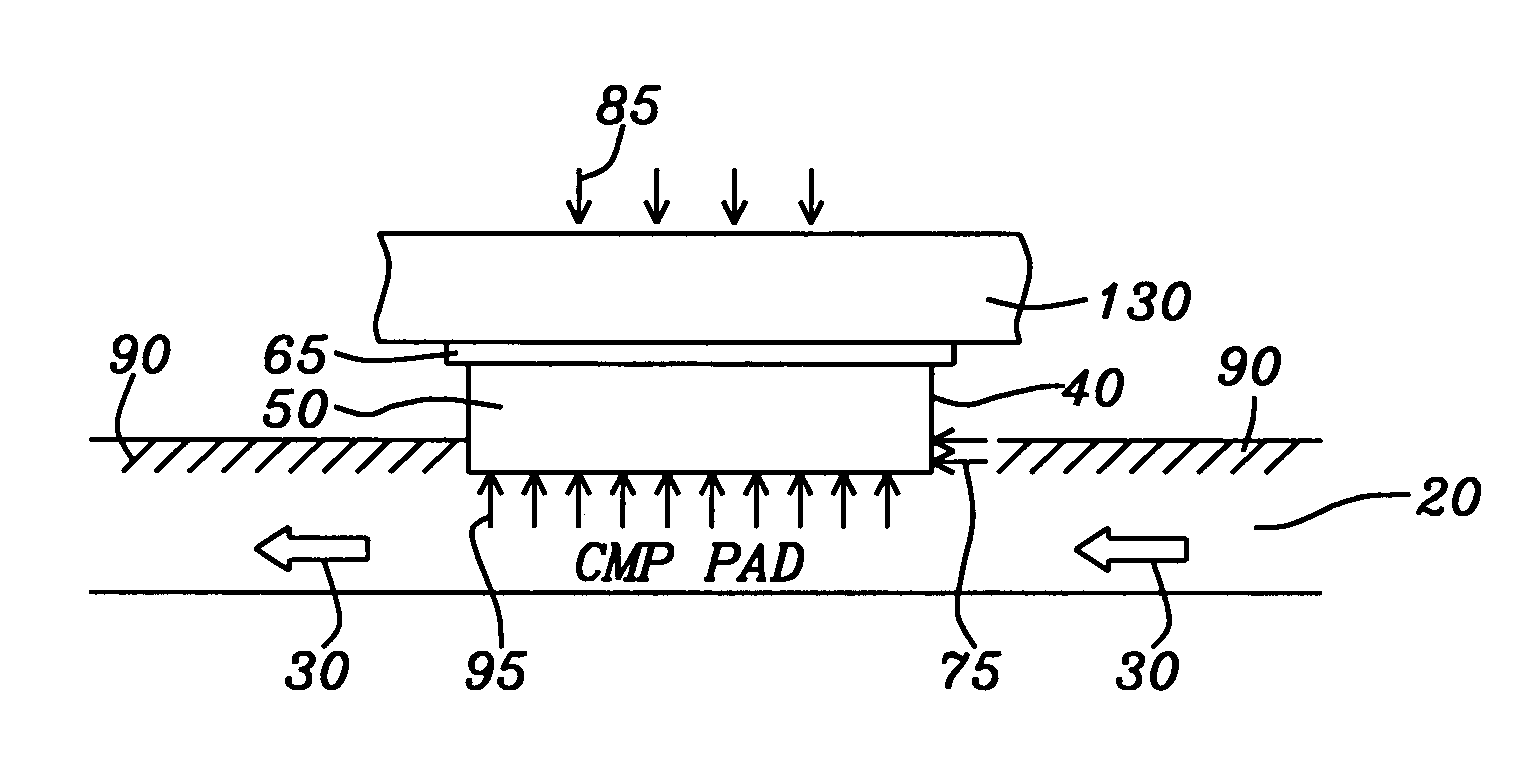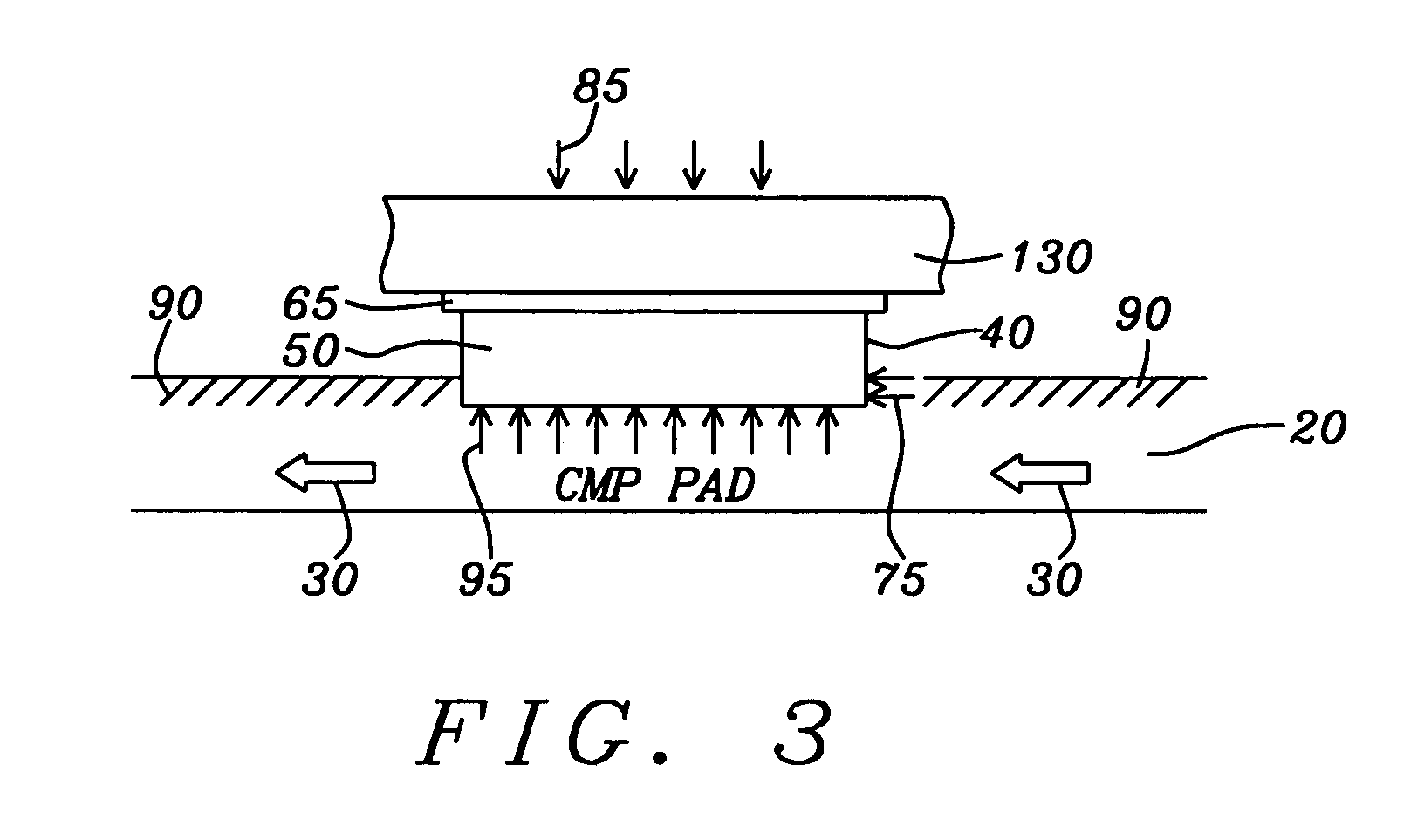Method for controlling overcoat recession in a magnetic thin film head
a thin film head and overcoat technology, applied in the direction of maintaining the head carrier alignment, manufacturing tools, instruments, etc., can solve the problems of generating a relatively significant amount of heat, physical contact, damage to the disk surface, etc., and achieves a slight degree of abrasion and softening the surface of the slider material
- Summary
- Abstract
- Description
- Claims
- Application Information
AI Technical Summary
Benefits of technology
Problems solved by technology
Method used
Image
Examples
Embodiment Construction
[0030] The preferred embodiment of the present invention teaches a method of chemical / mechanical (CMP) polishing the ABS of a slider, using a compliant CMP pad whose surface has been rendered porous and formed into a polymeric matrix by a polymeric pre-treatment. The nature of the pad surface and its pre-treatment is fully described below.
[0031] During the application of the process, the compliant porous CMP pad is additionally sprayed with an aqueous alkali lubricant solution. The alkali lubricant softens surface coatings of Al2O3 that overcoat and cover portions of the slider surface and the moving, compressive contact of the ABS with the surface of the compliant pad is sufficient to remove the softened material in a slow and controlled manner without the use of abrasive polishing compounds. In this way, a controlled recession of the oxide surface coating is obtained and thermal protrusion of the oxide at a later time during actual device operation in a hard disk drive (HDD) is e...
PUM
| Property | Measurement | Unit |
|---|---|---|
| temperatures | aaaaa | aaaaa |
| thickness | aaaaa | aaaaa |
| height | aaaaa | aaaaa |
Abstract
Description
Claims
Application Information
 Login to View More
Login to View More - R&D
- Intellectual Property
- Life Sciences
- Materials
- Tech Scout
- Unparalleled Data Quality
- Higher Quality Content
- 60% Fewer Hallucinations
Browse by: Latest US Patents, China's latest patents, Technical Efficacy Thesaurus, Application Domain, Technology Topic, Popular Technical Reports.
© 2025 PatSnap. All rights reserved.Legal|Privacy policy|Modern Slavery Act Transparency Statement|Sitemap|About US| Contact US: help@patsnap.com



